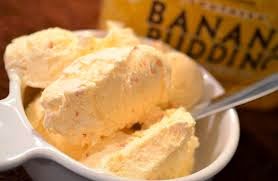Chobani’s menu included:
- Farfalle pasta tossed with a sauce made of nonfat plain yogurt, basil pesto and sundried tomatoes.
- Chopped lettuce with candied pecans, Fuji apples and crumbled goat cheese, all tossed with a strawberry balsamic dressing made with nonfat strawberry Greek yogurt.
- Nonfat vanilla Greek yogurt blended with dulce de leche and layered with banana slices, dark chocolate-covered pretzels and candied pecans.
- Sweet potato chips served with a whole milk plain Greek yogurt dip flavored with roasted shallots and chives.
I have long encouraged dairy processors to do more with their base ingredients. Turn them into dressings. (Think refrigerated buttermilk ranch packaged in a single-serve milk bottle). Make them into pasta sauces. (Think refrigerated Alfredo and similar sauces intended for tossing with hot and cold pasta, as well as vegetables.)
What about dairy desserts? In almost all developed countries other than the U.S., refrigerated dairy desserts are a booming business that continues to grow in both the pre-packaged refrigerated case and at the bakery/confection counter of mainstream supermarkets.
In the States, pre-packaged products have limited shelf space and fresh products are limited to the bakery/confection counter of finer, specialty food retailers. There is so much opportunity for growth here, especially as the millennial consumer seeks out impulse, indulgent products made locally with premium ingredients.
Here are some impressive innovative concepts to ponder. Many rely on the addition of dairy proteins for extra nutrition and natural stabilization.
Wild Oats Marketing LLC is one of the first packaged ready-meal manufacturers in the U.S. to take Greek yogurt to the next level…the level beyond the berries and granola parfait. Currently making their debut through the Fresh & Easy Neighborhood Market, a chain of grocery stores in the western U.S., new Wild Oats Marketplace Originals Parfaits are tagged as a super food and merchandized alongside prepared sandwiches and salads. The parfaits come in unique fruit, grain and yogurt combinations.
Varieties include Cinnamon Berry Quinoa & Vanilla Greek Yogurt, which is vanilla Greek yogurt layered with blueberries, cranberries, walnuts and a drizzle of honey. A 7-ounce square-shaped clear container with peel-off film lid provides 310 calories, 9 grams of fat and 12 grams of protein. The Cranberry Coconut Quinoa & Vanilla Greek Yogurt variety contains 310 calories, 13 grams of fat and 15 grams of protein.
There are also larger 8.5-ounce “Fusion” varieties. The line includes Berry Almond Chia and Honey Greek Yogurt, which is made with fresh berries, a honey drizzle and lemon zest. The single-serve parfait contains 340 calories, 9 grams of fat and 20 grams of protein.
The 7-ounce varieties sell for $3.49 while the 8.5-ounce ones go for a dollar more.
Nasco Gourmet Foods shows us that yogurt is not just for breakfast anymore. Yogüri Yogurt Dips are a blend of Greek-style yogurt with trendy herbs and spices. The product line is positioned as a smooth, creamy replacement for mayonnaise, sour cream and cream cheese. Varieties are: Cheddar Jalapeno, Cilantro Jalapeno, Garden Vegetable, Original, Parmesan, Ranch and Tzatziki. A 2-tablespoon serving contains 1 gram of protein along with 40 to 60 calories and 3 to 5 grams of fat, depending on variety. Here’s an extra perk: the dips are enhanced with probiotic cultures. The suggested retail price for an 11-ounce container is $4.99.
On the dairy dessert side, Germany’s Dr. Oetker recently added two varieties of Splits to its Marmorette line. These layered desserts blend either chocolate or vanilla pudding with chocolate flake-containing cream. The dessert is sold in four packs of 100-gram cups, with each individual cup containing 160 calories, 8.5 grams of fat and 3 grams of protein.
In Japan, Moringa Milk Industry adds a layer of health to creamy dairy pudding through the addition of stone-milled matcha green tea. This new pudding product comes in 80-gram portions, which contain 120 calories, 5 grams of fat and 2 grams of protein.
Lastly, the Germany convenience store chain Penny Markt recently introduced fruit and rice pudding combinations. New Penny To Go Milchreis comes in 400-gram containers in a variety fruity options.
There’s a great deal of opportunity to innovate in the categories of refrigerated dairy desserts and dairy ready meals. Formulating with dairy proteins and other dairy ingredients assists with improving nutritional profiles as well as ensuring product quality through stabilization.





































